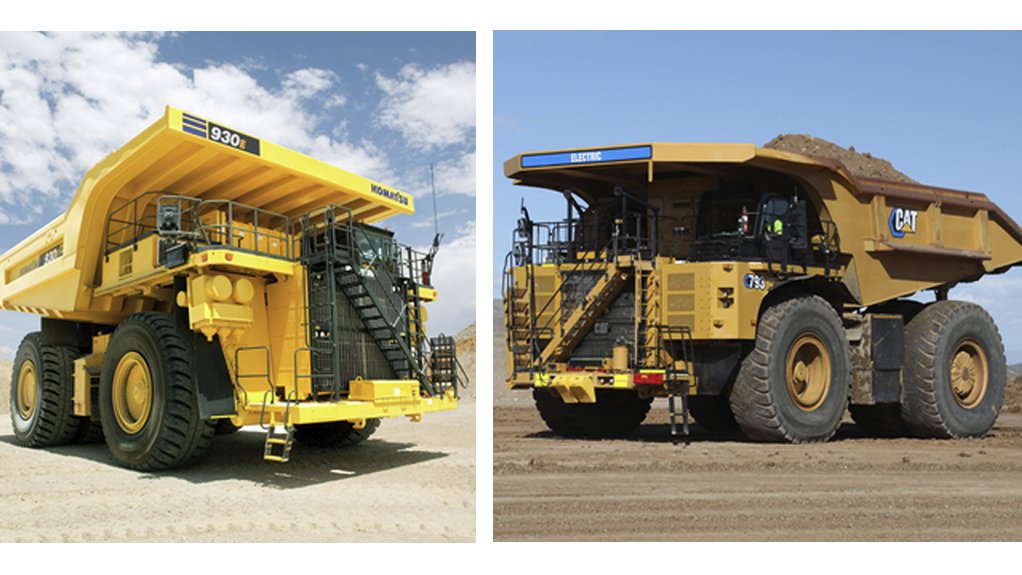In support of their shared ambitions to reduce carbon emissions and meet a net-zero operational greenhouse-gas emissions target by 2050, diversified miners BHP and Rio Tinto are partnering with heavy equipment original-equipment manufacturers Caterpillar and Komatsu to trial two large battery-electric haul trucks at the miner’s operations in the Pilbara of Australia.
These trials represent the first stage of battery-electric haul truck testing at BHP’s and Rio Tinto’s Pilbara operations.
Starting in the second half of this year, two Caterpillar AT 793 haul trucks will be sent to BHP’s mines in the region, while Rio Tinto will receive two Komatsu 930 haul trucks in 2026.
BHP will focus on trialling the Caterpillar variant and Rio Tinto the Komatsu variant, with the outcomes of the tests to be shared between the mining houses.
Caterpillar and Komatsu anticipate ongoing testing, development and refinement of truck and battery design to inform the approach for testing a larger number of haul trucks and the potential deployment of battery-electric haul truck fleets into each company’s operations.
Relatedly, Rio Tinto and BHP worked with Caterpillar and Komatsu in 2021 to support the development and validation of their prototype battery-electric haul trucks, with the trucks included in the new trials being based on those prototypes.
“Operational decarbonisation relies on breakthroughs in technology and partnerships like this will help drive our industry forward,” says BHP Australia president Geraldine Slattery.
She explains that replacing diesel as a fuel source requires BHP to develop a new operational ecosystem to surround the fleet.
“This collaboration brings together two leading global miners with two of the world’s biggest manufacturers of haul trucks to work on solving the critical challenge of zero-emissions haulage,” states Rio Tinto iron-ore CE Simon Trott.
Carbon emissions from diesel consumption in Rio Tinto’s mining equipment and rail fleet accounted for 12% of the miner’s Scope 1 and 2 emissions in 2023, while carbon emissions from the combustion of diesel accounted for about 40% of BHP’s Scope 1 and 2 emissions in the 2020 financial year.
“We need to address the way we plan our mines, operate our haulage networks, and consider the additional safety and operational considerations that these changes will bring. This is why trials are so critical to our success as we test and learn how these new technologies could work and integrate into our mines,” notes Slattery.
She adds that BHP has already seen a step-change reduction in Scope 1 and 2 operational GHG emissions through switching some of the miner’s supply to renewable electricity, “. . . we are looking to build on that progress through development of battery-electric technology to reduce diesel usage across our operations”.
“There is no clear path to net zero without zero-emissions haulage, so it’s important that we work together to get there as quickly and efficiently as we can. Testing two types of battery-electric haul trucks in Pilbara conditions will provide better data, and by combining our efforts with BHP we will accelerate learning,” explains Trott.
“As we work to repower our Pilbara operations with renewable energy, collaborations like this move us closer to solving the shared challenge of decarbonising our operations and meeting our net zero commitments,” he adds.
Edited by: Chanel de Bruyn
Creamer Media Senior Deputy Editor Online
EMAIL THIS ARTICLE SAVE THIS ARTICLE
ARTICLE ENQUIRY
To subscribe email subscriptions@creamermedia.co.za or click here
To advertise email advertising@creamermedia.co.za or click here













